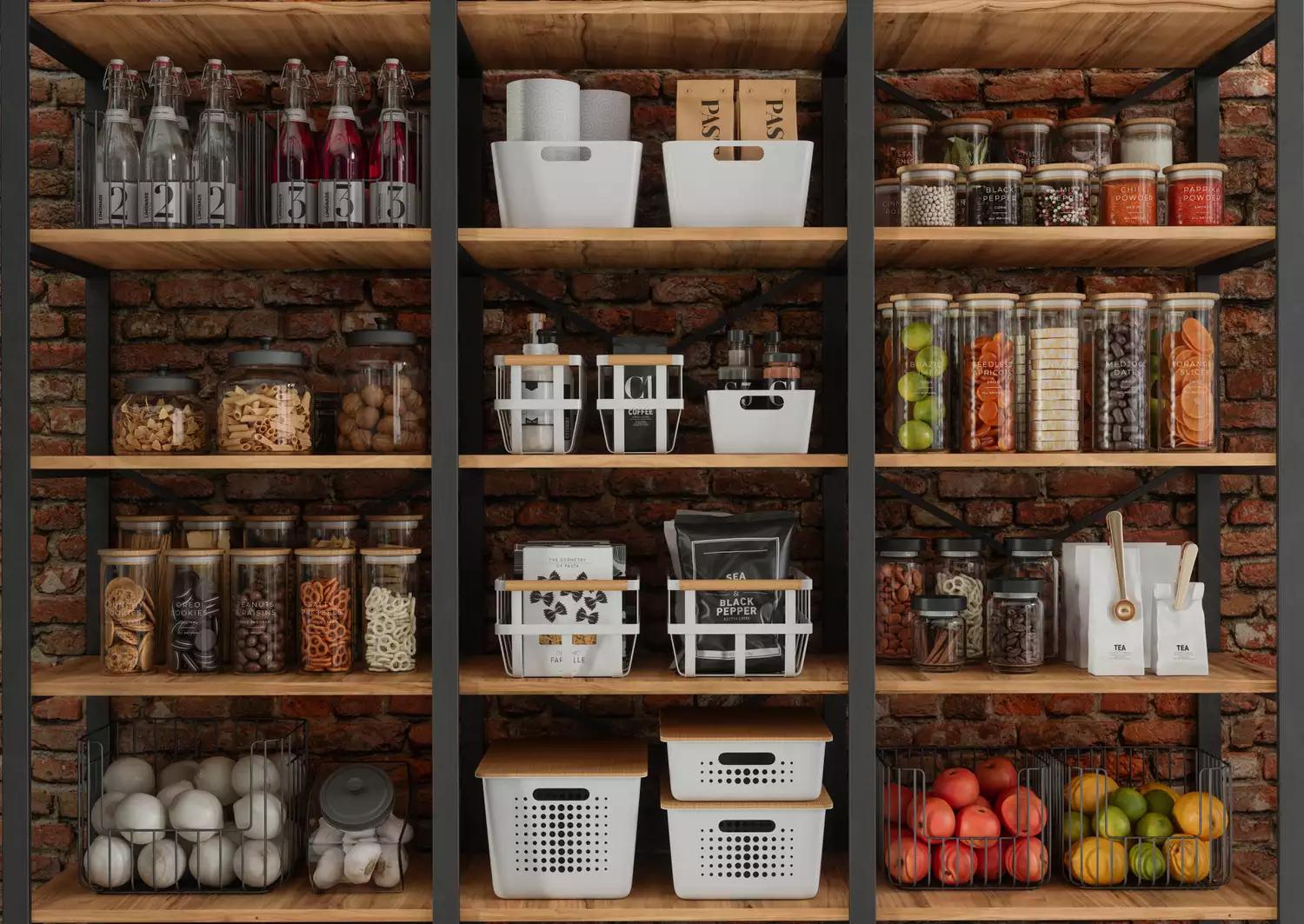

Articles
How Do I Buy More Storage
Modified: October 20, 2024
Looking to increase your data storage capacity? Discover how to buy more storage and expand your digital capacity for all your files and data.
(Many of the links in this article redirect to a specific reviewed product. Your purchase of these products through affiliate links helps to generate commission for Storables.com, at no extra cost. Learn more)
Introduction
As technology continues to evolve and new digital content is created every day, the need for additional storage has become increasingly important. Whether you’re a professional photographer with a massive collection of high-resolution images, a videographer capturing hours of footage, or simply an individual looking to store large amounts of data, the question of how to buy more storage is a common one.
In this article, we will guide you through the process of understanding your storage needs, researching different storage options, and ultimately making a well-informed decision on purchasing additional storage. We’ll also provide tips on efficiently utilizing your new storage space to optimize its performance and longevity.
So, if you find yourself constantly running out of storage space on your devices or cloud storage accounts, read on to discover the steps you can take to expand your storage capacity and ensure that you never have to worry about running out of space again.
Key Takeaways:
- Understanding your current storage needs, evaluating different storage options, and planning your budget are crucial steps in making an informed decision when purchasing additional storage. By following a systematic approach, you can ensure that your investment aligns with your long-term storage requirements.
- Efficiently utilizing your new storage involves organizing files, regular backups, compression techniques, and leveraging cloud storage and network-attached storage options. By implementing these tips, you can optimize your storage space and ensure seamless data management.
Read more: How Do I Get More Storage
Understanding the Need for More Storage
In today’s digital age, our lives are increasingly intertwined with technology. We rely on our devices for everything from capturing memories through photos and videos to storing important documents and files. However, the more we rely on technology, the more data we accumulate, and the need for additional storage becomes evident.
One of the primary reasons people require more storage is the ever-increasing size of digital files. High-resolution photos, 4K videos, and complex software applications all demand significant storage space. As we capture more content in higher quality, traditional storage options may quickly become insufficient.
Additionally, the rise of remote work and cloud-based services has further emphasized the need for expanded storage. Cloud storage providers offer the convenience of accessing files from multiple devices while ensuring data security. However, the amount of storage included in free or basic plans may not be enough for users with extensive data requirements.
Another key factor driving the need for more storage is the trend towards digital streaming and downloading. With the growing popularity of music and video streaming services, people are consuming more media than ever before. This results in a greater need for storage space to store downloaded content for offline access or to preserve personal media libraries.
Furthermore, as our dependence on technology increases, so does the need for data backups. Whether it’s for personal documents or important work files, having a reliable backup system is crucial. Investing in additional storage capacity ensures that you have the necessary space to create regular backups, reducing the risk of data loss in case of hardware failure or other emergencies.
By understanding the reasons behind the need for more storage, you can better assess your own requirements and determine the best solution for expanding your storage capacity. In the next section, we will explore how to evaluate your current storage space to assess your needs accurately.
Evaluating Your Current Storage Space
Before rushing into buying more storage, it’s essential to evaluate your current storage situation. Understanding how much storage you currently have, how it is being utilized, and where the bottlenecks or limitations exist will help inform your decision to buy additional storage.
The first step is to assess the storage space available on your devices. This includes your computer’s internal hard drive, external hard drives, USB flash drives, and any other storage media you may be using. Check the properties or settings of these devices to determine their total capacity and how much space is currently being used.
Next, consider your cloud storage accounts. If you use services like Google Drive, Dropbox, or iCloud, review the storage plans associated with these accounts and check how much space you currently have available. Take note of any limitations or concerns you have with these accounts, such as limitations on file size or upload/download speeds.
Once you have a clear understanding of your current storage space, analyze how it is being utilized. Are there specific types of files or applications that are taking up a significant amount of space? Are there any files or folders that you can delete or move to free up space? Identifying storage-hungry areas will help you make informed decisions about the type and amount of additional storage you may need.
Consider the performance of your current storage. Are you experiencing slow read or write speeds? Does accessing or transferring files take longer than expected? These performance issues could indicate a need for faster storage solutions, such as solid-state drives (SSDs), that can provide quicker access to your data.
Finally, think about your future storage needs. Are you planning to increase your media collection, engage in projects that require massive amounts of data, or collaborate with others on large files? Anticipating future storage requirements will help you make a more future-proof purchase.
By evaluating your current storage space and taking into account factors such as capacity, usability, performance, and future needs, you can make an informed decision about how much additional storage you require and what type of storage solution will best suit your needs. The next section will discuss the different storage options available to you.
Researching Storage Options
When it comes to buying more storage, there are several options available to consider. Understanding the different storage solutions and their pros and cons will help you choose the right one for your needs.
One common option is upgrading the storage capacity of your existing devices. This can involve replacing the internal hard drive of your computer with a larger one or adding an additional hard drive or solid-state drive (SSD) as a secondary storage option. This approach is ideal if you primarily work on a single device and want to increase its storage capacity.
External hard drives are another popular choice for expanding storage. These portable drives can be easily connected to your computer via USB or Thunderbolt ports and provide additional storage space that can be conveniently carried around. External hard drives come in various sizes and capacities, allowing you to choose one that meets your needs.
If you require easy accessibility and data synchronization across multiple devices, cloud storage is an excellent option. Services like Google Drive, Dropbox, and Microsoft OneDrive offer various storage plans, allowing you to store and access your files from anywhere with an internet connection. Cloud storage also provides the advantage of automated backups and file sharing capabilities.
Network Attached Storage (NAS) is a more advanced storage solution suitable for users with extensive storage requirements or those looking to set up a centralized storage system for home or office networks. NAS devices are separate units that connect to your network, providing a dedicated storage solution that can be accessed by multiple devices simultaneously.
Another emerging option is using Network-Attached Storage using Raspberry Pi or similar DIY solutions. This affordable and customizable approach allows you to set up your personal cloud storage system with control over hardware and software components.
When researching storage options, it’s essential to consider factors such as data capacity, speed, reliability, ease of use, and cost. Different solutions may have varying levels of data redundancy and backup features, so consider how important data security is to you.
Additionally, evaluate the scalability of the storage option and whether it can accommodate your future needs. You don’t want to invest in a system that will quickly become outdated as your storage requirements grow.
By thoroughly researching the available storage options and considering factors such as capacity, accessibility, scalability, and data security, you can choose a solution that aligns with your needs and budget. In the next section, we will discuss how to assess your storage requirements to determine the appropriate amount of storage to purchase.
Assessing Storage Requirements
Before making a decision on how much storage to purchase, it’s crucial to assess your specific storage requirements. This evaluation will help ensure that you invest in the right amount of storage and avoid overpaying for unnecessary capacity.
Start by analyzing your current data usage and storage patterns. Take inventory of the types of files you frequently work with and their average sizes. Consider the growth rate of your data, both in terms of new content creation and data accumulation over time. This information will give you a baseline for estimating your future storage needs.
Next, identify any specific projects or activities that may require additional storage. Are you engaged in multimedia production, where large video files and high-resolution images are common? Do you have a growing media library of movies, TV shows, or music? Understanding these specific requirements will help you determine the additional storage capacity needed.
Consider your data retention needs as well. How long do you typically keep files before archiving or deleting them? Are there any legal or regulatory requirements that determine how long certain files must be stored? By factoring in data retention policies, you can estimate the storage capacity needed for long-term storage and backup purposes.
Take into account any collaboration needs you may have. If you work in a team or share files with others, consider how much space will be required to store shared documents, multimedia content, or shared project files. Collaborative projects often involve frequent file sharing and versioning, which can quickly consume storage space.
It’s also important to consider the future growth of your data. While accurately predicting future storage needs is challenging, having a general idea of your data growth rate and any anticipated changes in your usage patterns can help you choose a storage capacity that will accommodate your needs for a reasonable timeframe. Consider factors such as future technology advancements, changes in file formats and sizes, and any planned projects or activities that may impact your storage requirements.
By thoroughly assessing your storage requirements based on current data usage, specific projects, data retention policies, collaboration needs, and future growth, you can make an informed decision on the amount of storage to purchase. In the next section, we will discuss how to compare different storage solutions to find the one that best suits your needs.
Read more: Where Can I Buy Gift Boxes
Comparing Different Storage Solutions
When it comes to buying more storage, it’s important to compare different storage solutions to determine which one best meets your needs in terms of capacity, functionality, performance, and cost. Here are some factors to consider when comparing storage options:
Capacity: Evaluate the maximum storage capacity offered by each solution. Determine whether the available storage meets your current requirements and allows for future growth. Consider whether the solution allows for expandability or if you’ll be limited to the initial capacity.
Performance: Assess the read and write speeds of each storage solution. Faster performance is important for tasks such as accessing and transferring large files or running applications directly from the storage. Solid-state drives (SSDs) generally offer faster performance compared to traditional hard disk drives (HDDs).
Reliability: Consider the reliability and durability of the storage option. Look for storage solutions with built-in redundancy or data protection mechanisms, such as RAID (Redundant Array of Independent Disks), to prevent data loss in case of hardware failures.
Accessibility: Determine how easily you can access your stored data. Some solutions allow for seamless integration with your devices, providing quick and easy access, while others may require additional steps or have limitations on device compatibility.
Ease of Use: Evaluate the user-friendliness and simplicity of each storage solution. Consider factors such as the setup process, user interface, and management features. A solution that is intuitive and easy to use will enhance your overall experience.
Scalability: Consider whether the storage solution can easily be expanded or upgraded as your needs grow. Some options, such as cloud storage or network-attached storage (NAS), offer scalability by allowing you to add more storage capacity as required.
Cost: Compare the cost of each storage solution, taking into account both the initial investment and any ongoing subscription or maintenance fees. Consider the value for money based on the features, performance, and capacity offered by each solution.
By carefully comparing different storage solutions based on capacity, performance, reliability, accessibility, ease of use, scalability, and cost, you can narrow down your options and choose the one that best suits your needs. In the next section, we will discuss how to plan your budget for purchasing additional storage.
You can buy more storage for your device by purchasing a compatible external hard drive or a cloud storage subscription. Make sure to check the compatibility and storage capacity before making a purchase.
Planning Your Budget
When considering purchasing additional storage, it’s important to plan your budget to ensure that you make a wise investment without breaking the bank. Here are some factors to consider when budgeting for your storage purchase:
Cost of Storage Solution: Research the prices of the different storage solutions you are considering. Compare the costs of various storage capacities and options to find the right balance between price and capacity. Keep in mind that higher-capacity storage options tend to cost more.
Future Needs: Anticipate your future storage needs when planning your budget. Consider factors such as data growth, new projects, and technological advancements that may require additional storage capacity. Investing in a solution that can accommodate your future needs can help you save money in the long run.
Additional Expenses: Take into account any additional expenses associated with the storage solution. Some options, such as cloud storage or network-attached storage (NAS), may have ongoing subscription or maintenance fees. Consider these expenses when budgeting for your storage needs.
Comparison Shopping: Shop around and compare prices from different vendors or service providers. Don’t settle for the first option you come across. Look for deals, discounts, or promotions that may help you get the storage you need at a lower cost. Consider both online and physical stores for competitive pricing.
Quality and Reliability: While it may be tempting to go for the cheapest storage option, it’s important to prioritize quality and reliability. Investing in a reliable storage solution will help ensure the safety and longevity of your data. Consider reviews and customer feedback when evaluating the quality of different storage options.
Trade-offs: Determine if there are any features or specifications that you can compromise on to lower the cost. For example, if high-speed performance is not essential for your needs, opting for a storage solution with a slightly lower read/write speed may help you save some money.
Warranty and Support: Consider the warranty and support offered by the storage solution. A longer warranty period and reliable customer support can provide peace of mind and protect your investment. Take into account any associated costs or terms of warranty coverage when budgeting.
By carefully planning your budget and considering factors such as the cost of the storage solution, future needs, additional expenses, comparison shopping, quality and reliability, trade-offs, and warranty and support, you can make a well-informed financial decision. In the next section, we will discuss the process of making the purchase.
Making the Purchase
Once you have assessed your storage requirements, researched different storage options, and planned your budget, it’s time to make the purchase. Here’s a step-by-step guide on how to proceed:
1. Choose the Right Storage Solution: Based on your research and evaluation, select the storage solution that best meets your needs in terms of capacity, performance, reliability, and cost. Consider factors such as compatibility with your devices, ease of use, and scalability.
2. Select the Vendor: Determine where you want to purchase your storage solution. You can choose from a variety of options, including online retailers, electronics stores, or directly from the manufacturer. Compare prices, warranties, and customer reviews to choose a reputable vendor.
3. Check for Sales or Discounts: Before making the purchase, check for any ongoing sales, discounts, or promotional offers. Many vendors offer deals on storage devices or subscription plans during certain times of the year. This can help you save money or get additional features for the same price.
4. Check Warranty and Return Policy: Review the warranty and return policy of the storage solution you intend to buy. Understand the terms and conditions of the warranty, including any associated costs or limitations. Knowing the return policy is important in case you encounter any issues or need to exchange the product.
5. Complete the Purchase: Once you are ready to make the purchase, proceed to the checkout process. Provide the necessary details and payment information to finalize the transaction. Double-check your order before confirming to ensure accuracy.
6. Keep Proof of Purchase: After completing the purchase, save a copy of the receipt or invoice as proof of purchase. This will come in handy for warranty claims or in case you need to contact customer support in the future.
7. Set Up the Storage Solution: Once you have the storage solution in your possession, follow the manufacturer’s instructions to set it up properly. This may involve connecting cables, installing software or drivers, and formatting the storage device according to your requirements.
8. Test the Storage Solution: Before fully relying on the new storage solution, perform some tests to ensure it is functioning correctly. Transfer some files onto the storage device, access them, and check the read/write speeds. This will help identify any potential issues early on.
9. Transfer Existing Data: If you need to transfer data from your existing storage to the new solution, use appropriate methods such as manual file transfers or utilizing backup and restore options. Follow the recommended guidelines to ensure a smooth and error-free data transfer process.
By following these steps, you can confidently make the purchase and set up your new storage solution. The next section will discuss the process of setting up your additional storage space for optimal usage.
Setting up Your Additional Storage Space
Once you have purchased and received your additional storage solution, it’s time to set it up and configure it for optimal usage. The exact setup process may vary depending on the storage solution you have chosen, but here are some general steps to help you get started:
1. Read the Documentation: Start by thoroughly reading the documentation or user manual that came with your storage solution. This will provide specific instructions and guidelines for setting up the device correctly.
2. Connect the Storage Device: Depending on the type of storage solution you have, connect it to your computer or network as instructed. Use the provided cables or connectors to establish the connection securely.
3. Install Necessary Software or Drivers: Some storage devices may require you to install specific software or drivers to ensure compatibility and optimal performance. Follow the manufacturer’s instructions to install any necessary software or drivers on your computer.
4. Format and Partition the Storage: If the storage device is new or needs to be reformatted for your specific requirements, use the appropriate tools or utilities to format and partition the storage. This will prepare it for storing files and organizing data effectively.
5. Set Up Security and Access Control: If privacy and security are important to you, consider setting up security features such as strong passwords, encryption, or access controls on your storage device. This will help ensure that your data remains protected and only accessible to authorized individuals.
6. Configure Backup and Sync Options: Determine if your storage solution offers built-in backup or synchronization features. If so, configure these options to automatically back up your important files or sync files across devices or cloud storage accounts for seamless access and data redundancy.
7. Test Functionality: After completing the setup, perform tests to ensure that everything is functioning as expected. Copy some files to the storage device, access them, and verify that the read/write speeds are satisfactory. This will help you identify any issues or performance concerns early on.
8. Organize Your Files: Develop a file organization system that suits your needs. Create folders and subfolders to categorize your files and make it easier to locate and retrieve them when needed. A well-organized file structure will save you time and effort in the long run.
9. Maintain Regular Backups: Once your additional storage space is set up, make it a habit to regularly back up your important files to ensure they are protected from data loss. Consider utilizing backup software or cloud backup services for automated and convenient backup solutions.
By following these steps and customizing the setup process to your specific storage solution, you can effectively set up your additional storage space and optimize its usage. In the next section, we will provide tips for efficiently utilizing your new storage to get the most out of it.
Read more: Where Can I Buy Ring Boxes
Tips for Efficiently Utilizing Your New Storage
Now that you have set up your new storage solution, it’s important to ensure efficient utilization of your storage space and maximize its performance. Here are some tips to help you make the most out of your new storage:
1. Organize your files: Develop a logical file organization system that makes it easy to find and retrieve your files. Create folders and subfolders based on categories, projects, or date ranges to keep your data organized and easily accessible.
2. Delete unnecessary files: Regularly review and delete files that you no longer need. Clear out duplicates, old versions, and irrelevant files to free up valuable storage space and keep your storage more manageable.
3. Utilize compression: Consider compressing files and folders that are not frequently accessed or require less immediate access. Compression can reduce file sizes, providing more storage space while allowing quick and easy decompression when needed.
4. Utilize cloud storage: Take advantage of cloud storage services to store files that you frequently access or need to share across devices. Offloading files to the cloud can free up local storage and provide the convenience of accessing files from anywhere with an internet connection.
5. Utilize network-attached storage (NAS): If you have a NAS device, use it to centralize and share files across your home or office network. This allows multiple devices to access the same files simultaneously, reducing the need for duplicate copies and optimizing storage usage.
6. Backup regularly: Preserve your important files by creating regular backups. Implement a backup strategy that suits your needs, whether it’s manual backups to an external hard drive or utilizing automated backup software or cloud backup services. This ensures that your data is protected in case of hardware failure or accidental deletion.
7. Optimize file sizes: If you work with large media files, consider optimizing them for efficient storage. Compress images and videos without compromising quality, convert high-resolution files to more manageable sizes, or utilize video compression techniques to reduce file sizes while maintaining acceptable quality.
8. Use storage management tools: Take advantage of storage management tools or utilities provided by your operating system or third-party software. These tools can help you identify large or duplicate files, monitor storage usage trends, and optimize storage performance and efficiency.
9. Consider external storage options: If you find yourself consistently running out of storage on your primary device, consider utilizing external storage options such as external hard drives or SSDs. These can provide additional storage capacity that can be easily connected and disconnected as needed.
By implementing these tips, you can efficiently utilize your new storage space and ensure that you are making the most out of its capacity and performance. Remember to regularly assess your storage needs and optimize your file management practices to maintain an organized and efficient storage system.
With these tips in mind, you can enjoy seamless storage management and ensure that your data is protected and easily accessible whenever you need it.
Conclusion
In today’s digital world, the need for additional storage has become a common challenge for individuals and businesses alike. Whether you’re struggling with limited space on your devices or seeking to expand your storage capacity for growing data demands, knowing how to buy and effectively utilize more storage is essential.
In this article, we have explored the steps involved in purchasing additional storage. We discussed the importance of understanding your storage needs, evaluating your current storage space, researching storage options, assessing your requirements, comparing different solutions, planning your budget, making the purchase, setting up the storage, and efficiently utilizing your new storage space.
By following these steps, you can make informed decisions about the type and amount of storage that best suits your needs. You can also optimize your storage usage, enhance data organization, and ensure the security and accessibility of your files.
Remember, when buying more storage, it’s crucial to consider factors such as capacity, performance, reliability, accessibility, ease of use, scalability, and cost. Assess your current storage requirements and anticipate future growth to make a purchase that aligns with your long-term needs.
Furthermore, take advantage of file organization strategies, regular backups, compression techniques, cloud storage, and network-attached storage (NAS) options to efficiently manage your files and prevent storage issues in the future.
Lastly, stay vigilant about evaluating your storage needs periodically and adapting your storage solutions accordingly. Technology advances rapidly, and your storage needs may change over time. By continually reassessing and adjusting, you can ensure that your storage remains optimal and reliable for years to come.
With the knowledge and understanding gained from this article, you are well-equipped to confidently navigate the process of buying and utilizing more storage. Embrace the potential of expanded storage capacity and enjoy the peace of mind that comes with knowing you have ample space to store your digital assets.
Frequently Asked Questions about How Do I Buy More Storage
Was this page helpful?
At Storables.com, we guarantee accurate and reliable information. Our content, validated by Expert Board Contributors, is crafted following stringent Editorial Policies. We're committed to providing you with well-researched, expert-backed insights for all your informational needs.


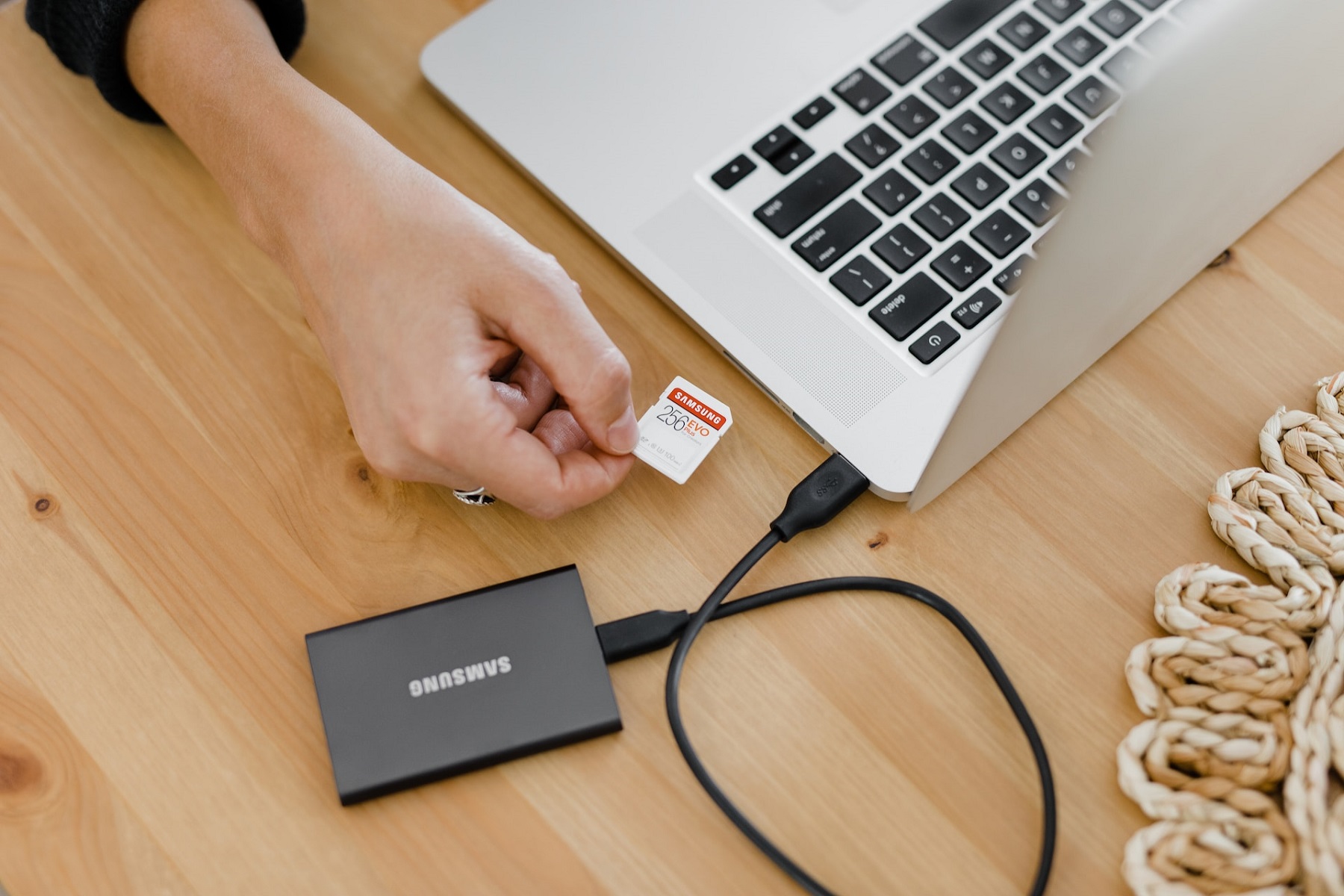
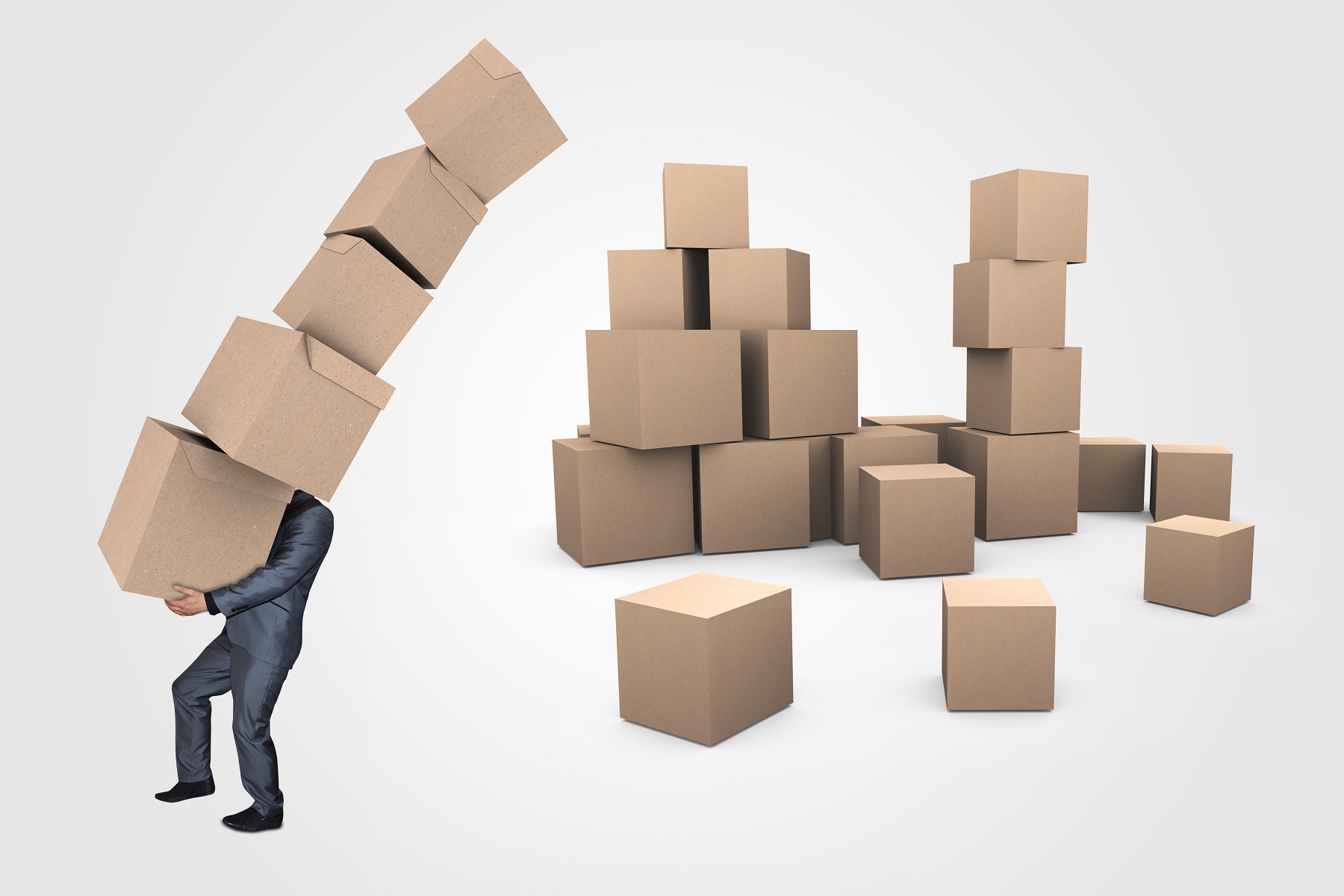



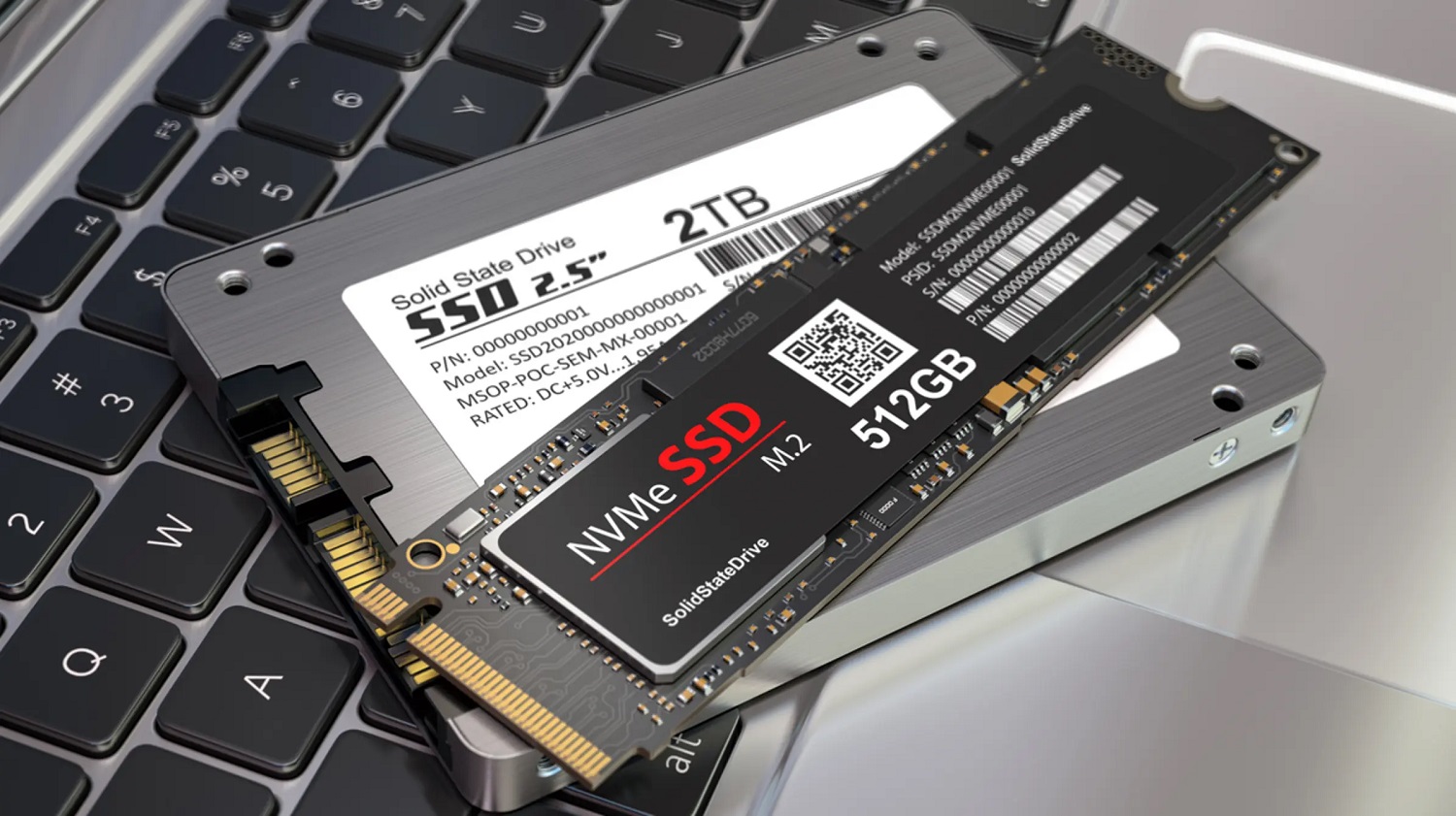


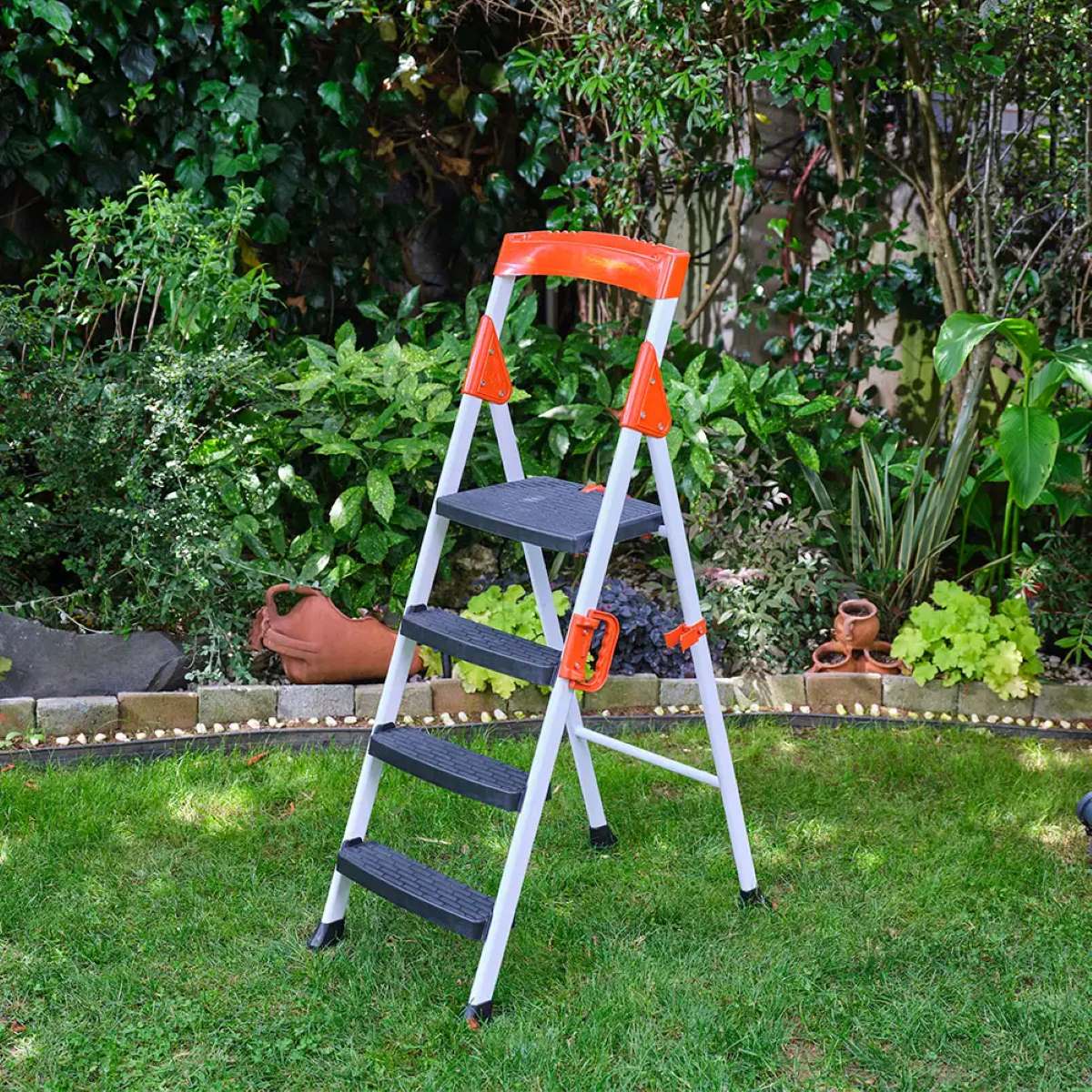

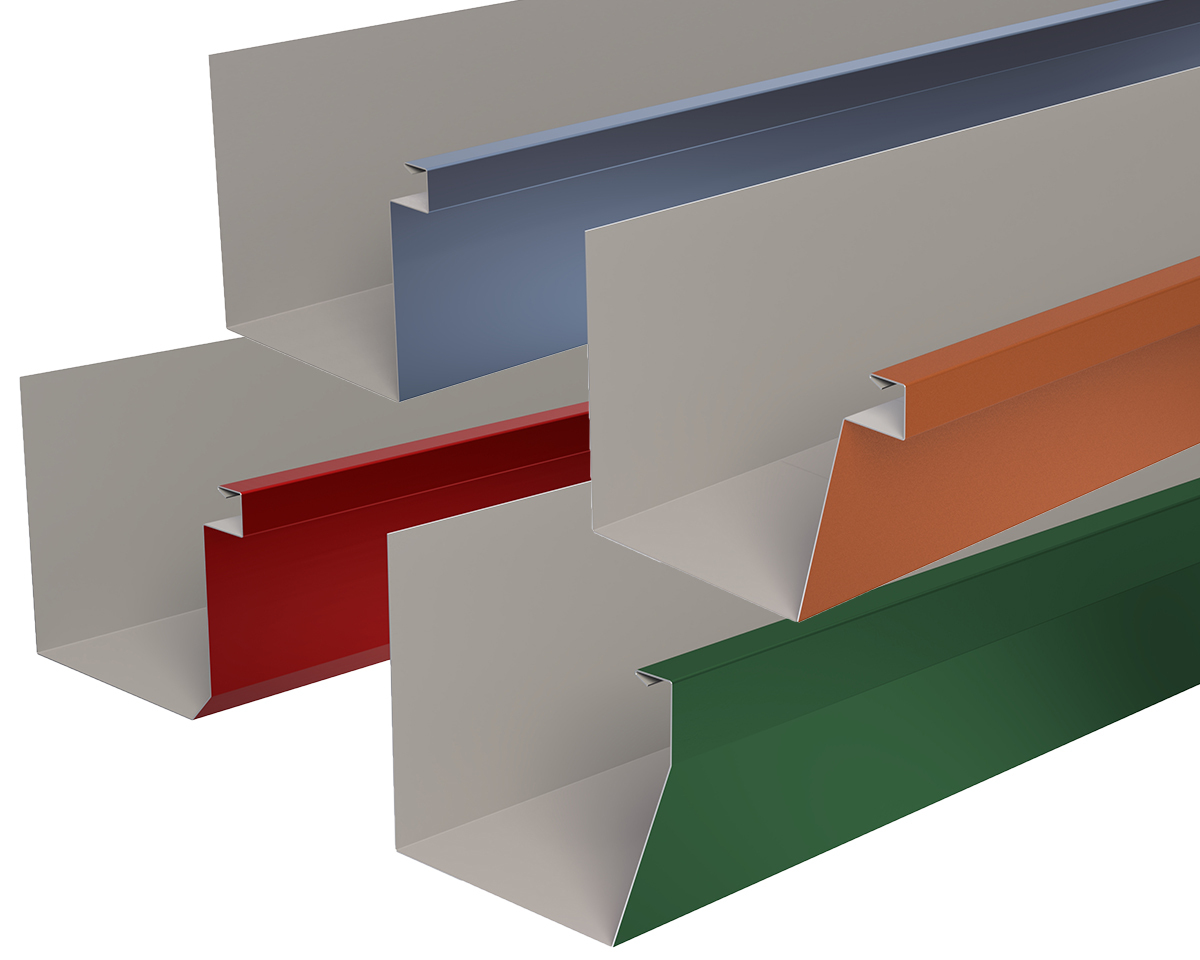

0 thoughts on “How Do I Buy More Storage”